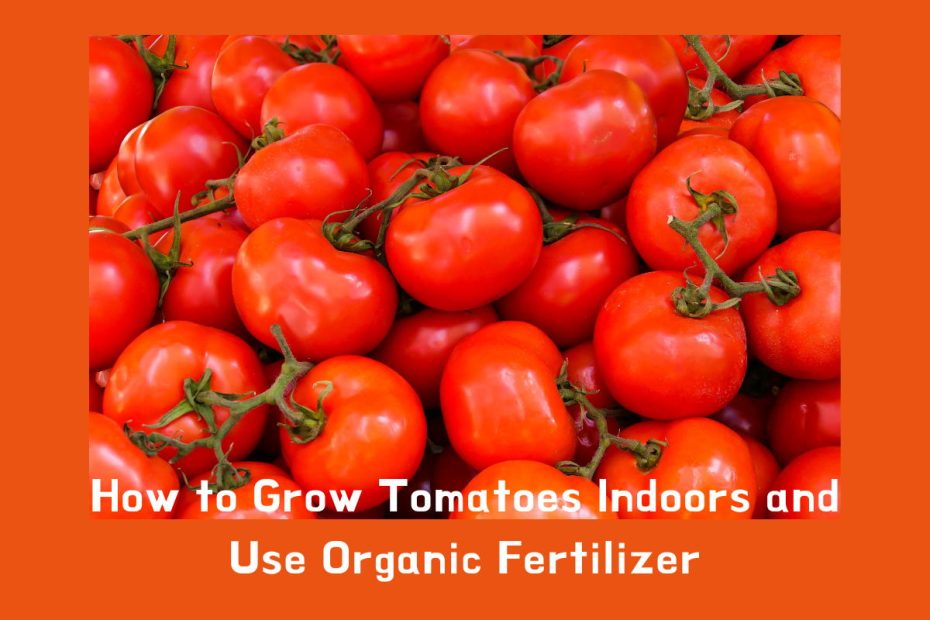Introduction
Want to enjoy fresh, homegrown tomatoes year-round? Growing tomatoes indoors can be a rewarding experience, especially when you can control the environment to ensure optimal growth. By incorporating organic fertilizers into your indoor gardening routine, you can provide your indoor tomato plants with essential nutrients without the use of harmful chemicals. In this article, we’ll explore the process of growing tomatoes indoors using organic fertilizers.
Table of Contents
Why Grow Tomatoes Indoors?
Gardener Tanya Anderson once said: “In the UK, many people choose to grow tomatoes in greenhouses, plastic sheds or indoors because it is warmer and protects the plants from Fusarium wilt (a fungal disease),” grown indoors because there’s no risk of freezing outdoors, these tomato plants have the potential to produce fruit year-round. The same is true for many living in areas with cold climates and short summers.
Growing tomatoes indoors during the winter is ideal because winters are too cold for growing outdoors. Small patio varieties are best grown indoors because it is easy to find containers large enough to accommodate their height and root systems.
Things to Note When Growing Tomatoes
Tomatoes are warm-season plants that grow well in average temperatures. As long as your potted tomatoes get the right amount of light and water, the temperature and humidity in your home will meet their growing needs. However, keep plants away from vents to avoid exposure to hot or cold drafts.
“It’s actually traditional to grow a pot or two of tomatoes in a greenhouse or enclosed porch, but they also work well next to a sunny window,” Anderson said. Tomatoes need at least six hours of light per day to produce fruit. , but eight hours or more of light works best. Unfortunately, the quantity and quality of light is the biggest problem with growing tomatoes or any light-loving plant indoors. For best results, place potted tomatoes next to a large, south-facing window. Rotate the pot frequently so the plants grow evenly and don’t tilt toward the light.
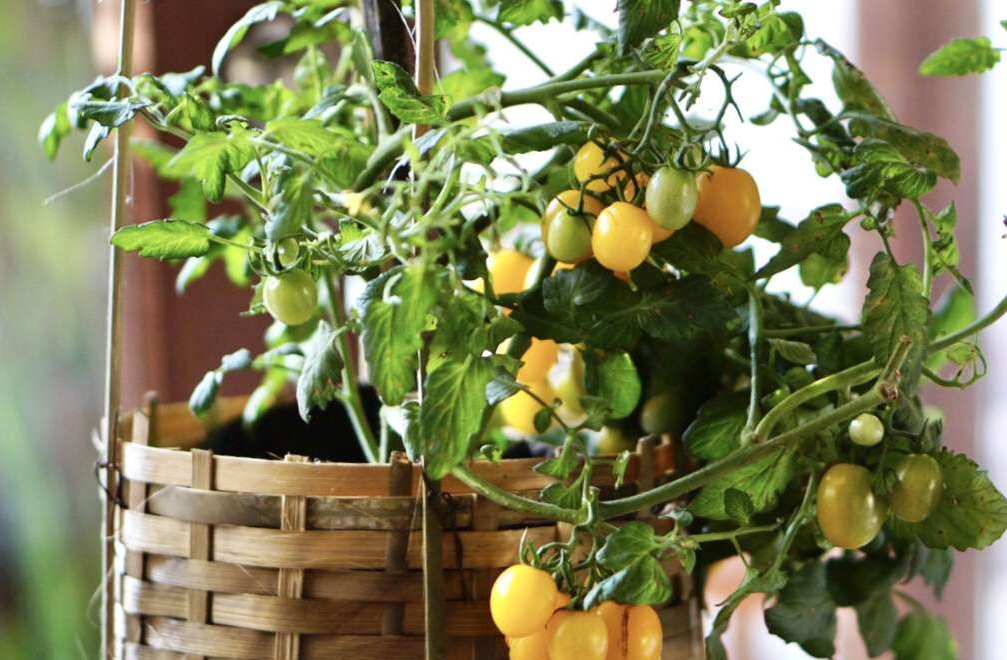
How to Grow Tomatoes Indoors
Choose the right tomato variety
The first step in growing tomatoes indoors is choosing the right tomato variety. Because of indoor space constraints, choose compact, dwarf, or cherry tomato varieties that grow well in containers. For example, Tiny Tim, Tumble Tom, or Cherry Gold; choose tomato varieties that thrive in an indoor environment with limited sunlight, such as cherry tomatoes or patio tomatoes.
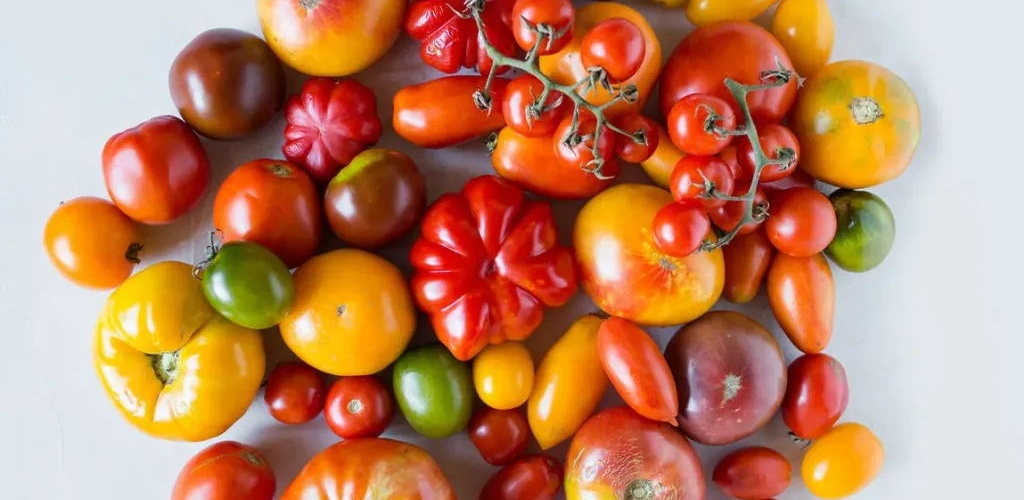
Preparing your indoor tomato garden
When growing tomatoes indoors you need to choose a sunny spot for your tomato plants or supplement with grow lights and get at least 6-8 hours of sunlight per day. Make sure to use a container with drainage holes large enough to accommodate the tomato plant’s root system to prevent water accumulation. Fill the container with a high-quality potting mix rich in organic matter to provide your tomato plants with the nutrients they need for optimal growth.
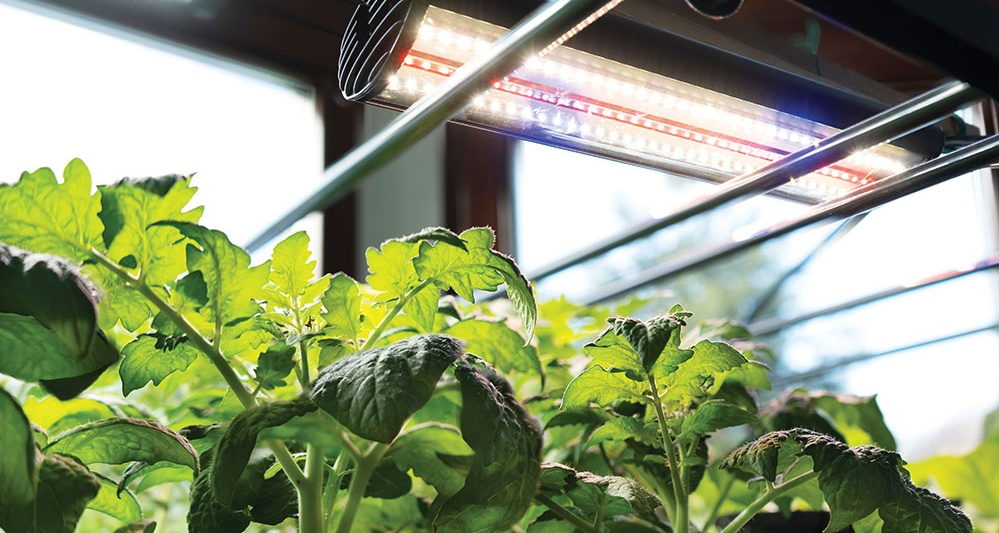
Feed your tomato plants with organic fertilizers
Tomatoes are heavy eaters, and potted tomatoes generally require more feeding than tomatoes grown outdoors in the ground.
Fertilizer is usually applied at planting, then again when the plants begin to bear fruit, and then every few weeks until the end of the harvest period.
Organic fertilizers are essential for nourishing tomato plants and promoting healthy growth. Choose a balanced organic fertilizer with a higher phosphorus content to promote fruit development. Compost, worm castings, or seaweed extract are all excellent organic options. Organic fertilizers slowly release nutrients, providing a steady supply of nutrients to tomato plants over time without the risk of nutrient burn.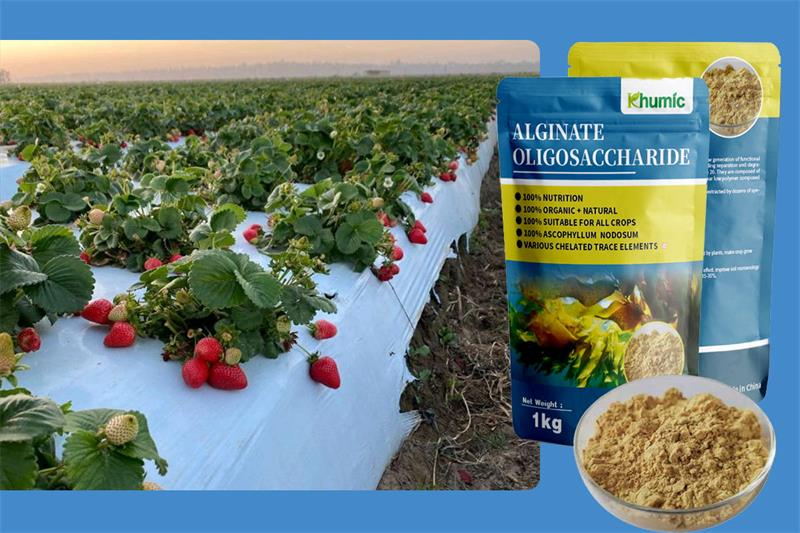
Observe plant status
Watch your tomato plants for signs of nutrient deficiencies or excesses and adjust your fertilization regimen accordingly to ensure optimal growth. Too much fertilizer can damage tomato plants, causing nutritional imbalances and even plant poisoning.
Watering and Maintenance
Proper watering is crucial for indoor tomato plants. Keep the soil moist but not waterlogged to prevent root rot. Mulching the soil surface helps retain moisture and reduces weed growth. Check regularly for pests and diseases and remove any infected leaves to ensure the overall health of your tomato plants.
Prune suckers regularly and support tomato plants with stakes or trellises.
Indoor tomato plants require the same maintenance tasks as outdoor plants. Check weekly for suckers, the little buds that sprout from where the stem and branches of your tomato plant meet. These little “suckers” won’t produce much fruit. When they are about 1/2 inch long, pinch them off the plant. Tie vine stems as needed to encourage upward growth and improve air circulation.Pollinate as needed
Tomatoes are self-pollinating, which means they don’t need insects for pollination. But when grown indoors, they require manual pollination, or a vibrating fan to simulate the wind conditions that typically move pollen between flowers. Or each day as the plant blooms, gently shake the stems from side to side or touch each flower with a cotton swab to transfer pollen from one flower to another.
Conclusion:
As your tomato plants grow vigorously, you’ll soon be harvesting ripe, juicy tomatoes. Growing tomatoes indoors allows you to enjoy fresh, delicious tomatoes year-round. By following these tips, you can grow a thriving indoor tomato garden.
FAQs
Can I use homemade compost as an organic fertilizer for indoor tomato plants?
Yes, homemade compost can be a great organic fertilizer for indoor tomato plants. It provides essential nutrients and helps improve soil structure.
How often should I fertilize my indoor tomato plants?
During the growing season, indoor tomato plants should be fertilized every two to three weeks with a balanced organic fertilizer.
Are there natural pest control methods for indoor tomato gardening?
There are several natural pest control methods for indoor tomato gardening, including introducing beneficial insects like ladybugs, using neem oil sprays, and practicing good hygiene to prevent pest infestations.
Can I save seeds from indoor tomatoes for future planting?
Yes, you can save seeds from indoor tomatoes for future planting. Simply extract the seeds from ripe tomatoes, dry them thoroughly, and store them in a cool, dry place until you are ready to plant them.
